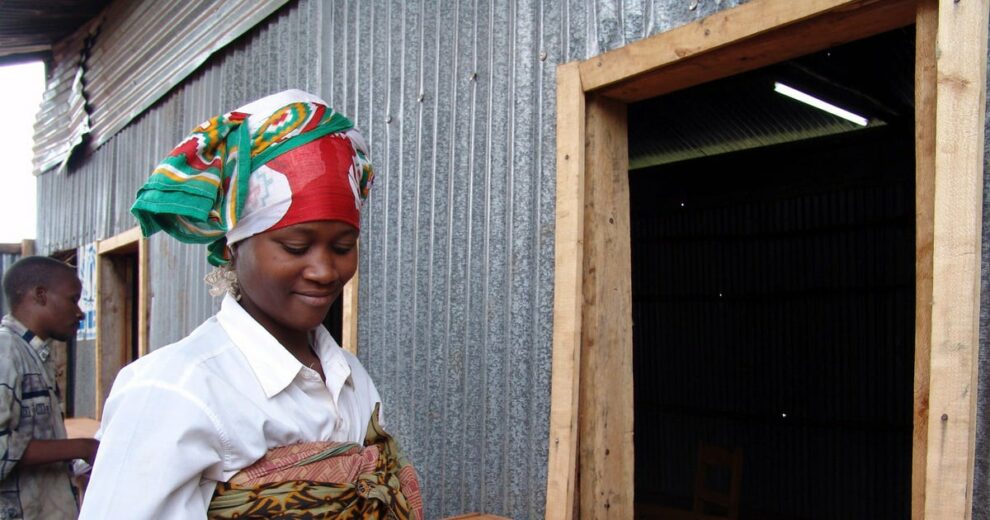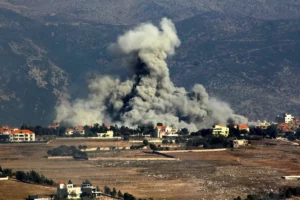While the Grand Bargain 2016 indicated an international commitment to locally-led response in humanitarian aid, advancements towards localisation, in both policy and action has been slow. With attention to locally-led cash and voucher assistance (CVA), this research aims to understand the barriers, progress, and opportunities to locally-led CVA in the Middle East and North Africa (MENA) region.
This qualitative research study used secondary data sources including 28 key policies and literature documents, together with primary data collected through 35 key informant interviews (KIIs). Respondents represented organisations in Iraq, Jordan, Lebanon, occupied Palestinian territories (oPt), Syria, Türkiye and Yemen. Data were analysed using an analytical framework based on the Power Cube (Gaventa, 2019) to evaluate the emerging power dynamics within locally-led responses using CVA in MENA.
Findings reflect current regional policy commitments with attention to the existing global policy and investigations on locally-led response. The research highlights tension between the reported commitment of the humanitarian sector towards localisation and the actual steps implemented to advance locally-led CVA. Subsequently, recommendations emphasise the sector’s responsibilities in order to expand locally-led approaches in an inclusive and practical way.
DEFINING LOCALLY-LED CVA AND THE ROLES OF DIFFERENT STAKEHOLDERS
There was no agreed definition of “locally-led” cash and voucher assistance (CVA). Most respondents agreed that localisation implies that local actors, either government or local NGOs, should become responsible for the design, implementation, management or coordination of cash or voucher programmes. However, from the perspective of international actors and relevant policy documents, the international community was often still characterised as more knowledgeable with leading responsibilities. In contrast, local actors were less likely to be perceived or described with these attributes. Perceived differences in expertise and responsibilities of international actors versus local actors have become internalised to perpetuate existing structural hierarchies within CVA and more broadly humanitarian aid.
POLICY COMMITMENTS AND ACTIONABLE STEPS TOWARDS LOCALLY-LED CVA IN MENA
Globally, strategies such as the United Nations High Commissioner for Refugees (UNHCR) Policy on Cash Based Interventions 2022—2026 (UNHCR, 2022) and the New Cash Coordination Model (IASC, 2022) emphasise the need to centralise local NGOs and governments within cash-based programming. However, in MENA, many international respondents reported that their organisations did not have specific policy guidance for locally-led responses. Overall, local actors remain sceptical that any policies are prioritising local leadership in practical implementation of CVA. One local NGO in Iraq suggested current policy commitments remain “ad-hoc and context driven”.
When asked about specific actionable steps in locally-led response, many international actors from international non-governmental organisations (INGOs) and UN agencies suggested progress was made through capacity building of local non-governmental organisations (NGOs). However, this approach undermines local stakeholders’ existing technical and contextual knowledge, while minimally investing in local systems strengthening demanded by both local NGOs and the international community. Other steps, such as aligning international CVA to social protection systems, improving inclusivity of local actors in coordination and cash working groups (CWGs) and opening direct funding opportunities for local NGOs, remain limited, for European Civil Protection and Humanitarian Aid Operations (ECHO) states that their organisation is only at the “very beginning of a much more systematic approach”, and Metcalfe-Hough et al. (2021) report only 1.7% of global budget was allocated to local organisations in 2021.
CURRENT BEST PRACTICES
According to stakeholders, best practices of locally-led CVA occur when CVA approaches are connected to government-led social protection systems and when local NGOs claim leadership responsibilities during a CVA project while receiving technical support from the international community. More specifically, financial institutions and consortia members recognised Estidama++ in Jordan as a productive measure to bridge a humanitarian and development approach to CVA. In Iraq and Syria, international organisations have supported the capacity and systems development of Ankawa Humanitarian Committee (AHC) and that of local actors in the Cash Assistance in Re-Emerging Markets (CARMA).
KEY BARRIERS TRANSLATING POLICY INTO OPERATIONS
Stakeholders identified a series of practical and ideological barriers to the implementation of policy commitments to locally-led CVA. On the surface, the funding ecosystem and the international humanitarian system’s existing structure are associated with the practical barriers. Local actors struggle to establish the required systems and operational procedures necessary to comply with international standards of accountability, global data protection regulations (GDPR) and transparency.
The root causes of these problems reveal hidden and invisible power dynamics that prevent the growth of local actors into leadership responsibilities. International perceptions of corruption and the politicisation of local actors in MENA fuel the hesitancy to fund and partner with local NGOs and governments. While in some instances these issues may be valid, local actors felt the international community often held mistrust and scepticism of local actors regardless of the context and evidence. One stated, “donors are afraid to take that leap of faith and put that trust in us”. Further, the continued concentration on the capacity building of individual professionals fails to recognise the experience of local NGOs.
ENABLING FACTORS AND POTENTIAL OPPORTUNITIES
Emergency responses such as the earthquake in Türkiye and Syria demonstrate how trust between governments, local actors and the international community enable locally-led responses to succeed. Government and donor policies requiring a locally-led approach increase the prioritisation of localisation as demonstrated by a UK Foreign, Commonwealth and Development Office (FCDO) project cited by a Danish Refugee Council (DRC) informant.
Other international respondents suggested that digitalisation, and continued linkages between social protection mechanisms were seen as opportunities to improve locally-led CVA.
RECOMMENDATIONS
- International actors need to create public action plans to institutionalise and operationalise localisation policies with specific attention to CVA. These commitments need to identify indicators and measures of success that hold international organisations accountable to their commitments. These plans should elevate learning from existing locally-led mechanisms.
- Inter-organisational bodies, such as coordination groups, consortia and CWGs, must adopt inclusive operational guidelines to create space and leadership of local organisations.
- Coordination and CWGs should hold learning workshops to elevate the success of existing locally-led mechanisms, including those established during the onset of emergencies, to continue through early recovery and development approaches.
- International organisations must demand and collectively advocate that financial institutions facilitate more collaborative models and increase access to appropriate funding for local actors.
- The international community – led by local actors’ demands and needs – must financially invest in local systems strengthening processes. This would include facilitating locally-led capacity assessments to identify the local agencies’ strengths, and identify where international technical support can add value.
- International actors must challenge existing unconscious bias within their organisations and the humanitarian system through equitable partnership guidance, inclusive hiring and anti-racism policies.
- Donors must redesign their risk frameworks and internal processes to create flexible and fair funding streams accessible to local actors.
- Donors, funding institutions and consortia should require INGOs to include localisation strategies and local leadership within their project proposals.
- Local actors should claim their own coordination spaces through the membership with collectives such as NEAR, or by establishing nationally-led inter-organisational bodies.
- National governments should create regulations and policies that require international actors to create equal partnerships centred on local leadership.
Source: reliefweb

















Add Comment